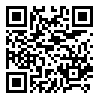Thu, Apr 3, 2025
| فارسی
Volume 7, Issue 2 (2-2013)
bjcp 2013, 7(2): 41-50 |
Back to browse issues page
Abstract: (11736 Views)
Abstract
There has been an increasing interest in optimism and its underlying characteristics after the development of positive psychology. Many studies suggest that there is a significant difference between the optimists and pessimists in attention to positive and negative information and stimuli. Because of the cognitive nature of attention, however, people’s expectancies and goals also may play a role. The aim of this study was to investigate the interactional effect of optimism and having a goal on attention bias. 60 participants were divided into two groups (optimists and pessimists) using the Life Orientation Test (LOT) (Scheier and Carver, 1985). They looked at positive and negative stimuli each of which was either associated with their goals or not. Subject’s gaze was measured using an eye-tracking device (SMI Model). Analysis showed that goal oriented optimists looked significantly more than their non goal oriented counterparts at positive stimuli. However, pessimists with and without goal orientation did not differ in this respect. There were no significant differences between the groups as far attention to negative stimuli was concerned. Results support the interactional effect of optimism and goal orientation on attention bias and suggest that they moderate each other as cognitive and affective constructs.
There has been an increasing interest in optimism and its underlying characteristics after the development of positive psychology. Many studies suggest that there is a significant difference between the optimists and pessimists in attention to positive and negative information and stimuli. Because of the cognitive nature of attention, however, people’s expectancies and goals also may play a role. The aim of this study was to investigate the interactional effect of optimism and having a goal on attention bias. 60 participants were divided into two groups (optimists and pessimists) using the Life Orientation Test (LOT) (Scheier and Carver, 1985). They looked at positive and negative stimuli each of which was either associated with their goals or not. Subject’s gaze was measured using an eye-tracking device (SMI Model). Analysis showed that goal oriented optimists looked significantly more than their non goal oriented counterparts at positive stimuli. However, pessimists with and without goal orientation did not differ in this respect. There were no significant differences between the groups as far attention to negative stimuli was concerned. Results support the interactional effect of optimism and goal orientation on attention bias and suggest that they moderate each other as cognitive and affective constructs.
Type of Study: Research |
Subject:
Special
Received: 2013/04/27 | Accepted: 2013/11/25 | Published: 2013/11/25
Received: 2013/04/27 | Accepted: 2013/11/25 | Published: 2013/11/25
| Rights and permissions | |
 |
This work is licensed under a Creative Commons Attribution-NonCommercial 4.0 International License. |

